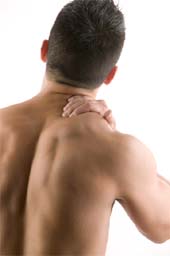Here are some details on why muscles ache after exercise, and why, if your muscles ache, you should be pleased!

Sore muscles can be a goof thing!
The science bit:
So what causes this soreness? There are many thoughts on this but no definitive answers however the one accepted thing regarding soreness after exercise is the name it’s given – DOMS (delayed onset muscle soreness).
The main thoughts on why you feel sore after an intense session are…
* A bout of exercise causes inflammation, which leads to an increase in the production of immune cells (comprised mostly of macrophages and neutrophils). Levels of these immune cells reach a peak 24-48 hours after exercise. These cells, in turn, produce bradykinins and prostaglandins, which make the pain receptors in your body more sensitive. The result? Whenever you move, these pain receptors are stimulated. Because they’re far more sensitive to pain than normal, you end up feeling sore.
* Exercising creates microtears in the fibres that make up your muscles. When your muscles ache, your body is repairing these tears and making your muscles stronger.
* Delayed onset muscle soreness (DOMS), also sometimes called muscle fever, is the pain or discomfort often felt 24 to 72 hours after exercising and subsides generally within 2 to 3 days. It is commonly thought to be caused by increased lactate concentrations; however, this is a misconception as it has been shown elevated levels of lactic acid rarely persist after an hour of rest. Although the precise cause is still unknown, the type of muscle contraction seems to be a key factor in the development of DOMS. A theory recently developed states that DOMS is caused by the breakdown of muscular fibres. This is particularly apparent in strength/resistance programs. The breakdown occurs due to stress, and allows the muscles to grow stronger and larger, as shown through hypertrophy. Exercises that involve many eccentric contractions, such as downhill running, will result in the most severe DOMS. This has been shown to be the result of more muscle cell damage than is seen with typical concentric contractions, in which a muscle successfully shortens during contraction against a load. Some research claims that DOMS is not caused by the pain from damaged muscle cells, but from the reinforcement process. The muscle responds to training by reinforcing itself up to and above its previous strength by increasing the size of muscle fibers (muscle hypertrophy). This reinforcement process causes the cells to swell in their compartment and put pressure on nerves and arteries, producing pain.
I believe that all of the above have some merit in the explanation of DOMS but the one thing we all know is that it does hurt. However, it’s that pleasure pain thing as you know you have worked hard and you are improving your strength and fitness and working towards losing weight.
So! If your muscles ache you know you’ve pushed yourself so that you will be improving and that’s what we want! Of course, you must be careful not to overdo it, we don’t want you straining something, and be sure to warm up beforehand and cool down afterwards to look after your hard-working muscles.
